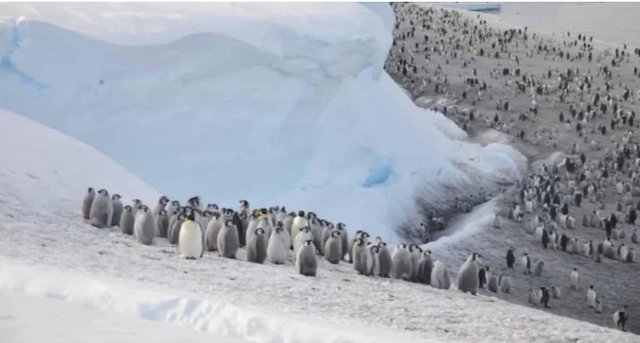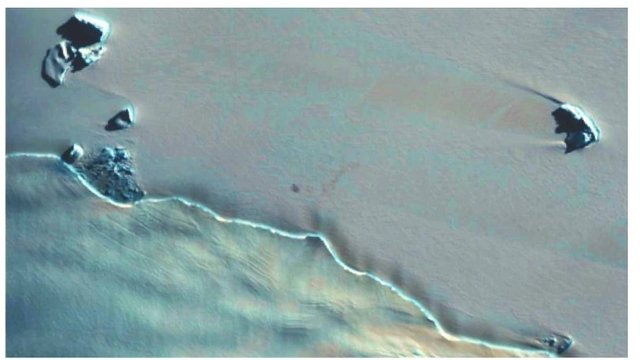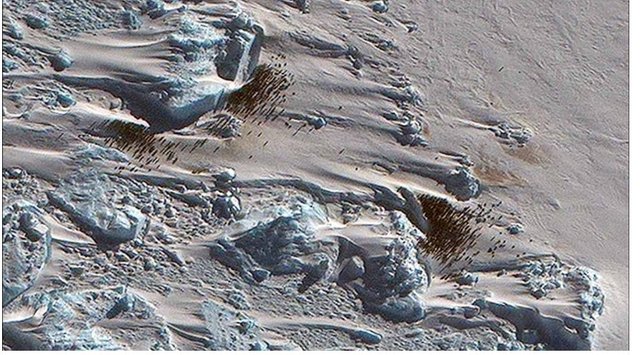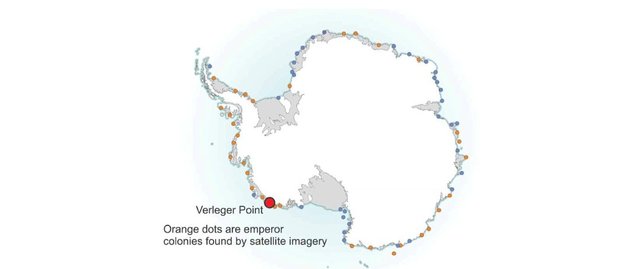
A new penguin colony discovered by a satellite (Photo:
Christopher Walton_BAS)
Satellite imagery shows penguin colonies in West Antarctica. A colony of emperor penguins that you have never seen before. The bad news, however, is that rapid changes in Antarctica's sea ice have increased the danger to these penguins.
Satellite images taken in the most remote and inaccessible regions of Antarctica have revealed a new colony of emperor penguins, never seen before. About 500 birds live in this colony. Including this colony, there are now a total of 66 emperor penguin colonies along the coast of Antarctica. Half of these colonies were discovered only by satellite. The climate crisis is becoming a threat to these colonies as sea ice is rapidly melting.

Photo from the Copernicus Sentinel 2 satellite (Photo: Copernicus Sentinel-2_BAS)
Peter Fretwell of the British Antarctic Expedition, who discovered the colony, says it's a very exciting discovery. However, like many recently discovered sites, this is a small colony, located in an area severely affected by sea ice loss.
Emperor penguins are the only penguins that breed on sea ice rather than on land, and live in areas that are very difficult to study, as they are inhospitable and can reach temperatures as low as -60°C. For the past 15 years, British Antarctic Survey (BAS) scientists have searched for new colonies by using satellites to look for brown specks of guano (penguin droppings) on ice.

This was also confirmed by images from the Maxar Worldview-3 satellite (Photo: MAXAR Technologies_BAS)
Based on images from the European Copernicus Sentinel 2 satellite mission, this new colony was discovered at his Verlager Point in West Antarctica. The colony was also confirmed in high resolution images from the Maxar Worldview-3 satellite. Fretwell says penguins need enough ice for their chicks to grow between April and September. However, if the ice breaks before that, the chick falls into the water and either drowns or freezes to death.

Colonies found at Verlager Point, Antarctica (Photo: Peter Fretwell_BAS)
Penguin colony size directly affects penguin survival as they cling together to protect themselves from winter storms. Especially during the two months that male penguins incubate their eggs.
Many colonies are already dead due to changes in sea ice. These include Margaret Bay penguins, which have been studied since the 1940s, and the Halley Bay colony, which has existed for 50 years. Fretwell says most emperor penguins may never meet a human in their lifetime, but what we do on the other side of the world is killing them slowly.
Fretwell says there have been many changes in Antarctic sea ice since 2015, and those changes are happening at an unprecedented rate. Antarctic sea ice conditions were the worst last year, and this year is worse than ever.
Previous studies have shown that 90% of the colony will be extinct by the end of the century unless steps are taken to reduce greenhouse gas emissions.